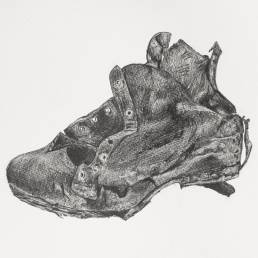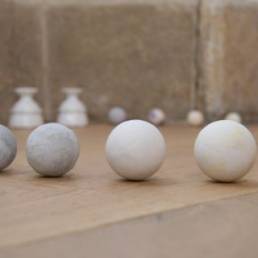The work of R.E.P has significant relevance for us at a time of financial repression of our cultural life, especially here in Somerset where cuts have resulted in a substantial reduction of art opportunities in the region, including the closure of the Brewhouse Theatre and Arts Centre in Taunton. How wonderful that OSR Projects in West Coker are hosting this event, in their own socially engaged communications space. Curated by Simon Lee Dicker and Tim Martin, Mediators is a video installation by Kyiv based artist collective R.E.P. Group (Revolutionary Experimental Space). The installation includes documentation of street performances carried out by R.E.P in Kyiv (Ukraine), Gyumri (Armenia), Almaty (Kazakhstan), Plovdiv (Bulgaria), Schwaz (Austria) and Byalystok (Poland).
R.E.P. (revolutionary experimental space) was founded in 2004, in synchrony with the political events of the Orange revolution in Ukraine. A collective of six Ukranian artists who in addition to their solo work, practice collaboratively in performance installation and film to reflect on social-cultural and political context in Europe. Much of their work is social activism and critical discourse is a key part of their approach.
In 2006 for the Kiev Performance art festival they invited a lyre player storyteller to recount tales of contemporary art actions and performances in the same way that stories of heroic deeds have traditionally been told all over the Ukraine. This was the first in a series of different events in six different countries, all using bardic folk players to sing the song of contemporary performance art. The films have been brought together in this Somerset village for the first time in the UK, offering a unique opportunity to explore their work before R.E.P’s appearance in this year’s Venice Biennale.
One of the first things that came to my mind while viewing the films was the poet Irina Ratushinskya powerfully explaining how, when she was a political prisoner, song was vital in the Gulag as a means of communication, of hope and of survival against repression. The human voice singing with acoustic instrument has a purity that transcends media, from Billy Bragg to Bob Dylan the single human voice reaches us in ways other media cannot. I was struck by the different engagement of the audience in different countries. In Armenia the listeners were engaged and amused, if appearing confused, hearing songs of contemporary art actions, in other countries people seemed to circumnavigate the singer to avoid any connection with street singing that may be a slightly dangerous act of freedom. The resonance of a powerful song echoes long after the singer has gone.
Then I began recognising anew the long history of repression of contemporary art being sung and honored in these songs. In the West we are used to the discomfort of others at new ideas and challenging representations, and we expect our right to free speech. Somerset has significant history in being anti contemporary art. Somerset County Council has recently cut all arts funding. It is often right wing governments that find contemporary art and free expression threatening. The reduction of all art education from primary school to higher education is significant in the UK. However to see work by contemporary artists in eastern Europe who have not had the advantages we have had and yet, despite intense oppression, find a way to make their work and in so doing enable us to hear again of the courage of contemporary artists whose work was physically removed or attacked over time is both humbling and inspiring.
According to Bourriaud, relational art encompasses “a set of artistic practices which take as their theoretical and practical point of departure the whole of human relations and their social context” and I feel Mediators is an example of relational art. Bourriaud moved on to describe Altermodernism, a term which is still to become common currency, although if only judging from my own visit to the Tate triennial exhibition and from the price of the book on Amazon, the importance of his theory will become to be seen as seminal. It is widely accepted that we are in a new culture beyond post modernism, and R.E.P’s global approach is both sited within and appears to embrace this culture.
Bourriaud wanted to approach art in a way that ceased “to take shelter behind Sixties art history”, but something about the energy behind REP’s work reminded me of performance art in the sixties. The kind of energy that does not rely on funding or education, that develops from a need, and from questioning emerging understanding. Bourriaud sought to offer different criteria by which to analyse the often opaque and open-ended works of art of the 1990s.
Victoria Alexander in her chapter ‘teleology after postmodernism’ describes, “not end state but emergent whole”. I think this is an appropriate way to approach REP’s very interesting and important work. Not as viewing an end state or a single work, but being introduced to a visible and changing relationship where each performance and each film influences each other and develops our engagement with and understanding of contemporary art in Europe in 2013, located in its historical context.
As part of this exhibition OSR Projects are producing a new work, conceived by R.E.P. Group and performed by a traditional folk musician. The performance will celebrate a traditional form of storytelling specific to Somerset whilst telling the story of international, cosmopolitan, contemporary art and censorship. This event will be filmed and added to the R.E.P. Group archive, and what a timely addition that will be.
Alexander, Victoria N. The Biologist’s Mistress: Rethinking Self-Organization in Art, Literature, and Nature (2011)
Bourriaud, Nicolas, Relational Aesthetics (1998)
Bourriaud, Nicolas, Altermodern (2009)
Ratushinskya Irina, Grey is the Colour of Hope (1988)
image – Diana Pilcher from UCY at the OSR Project Space



